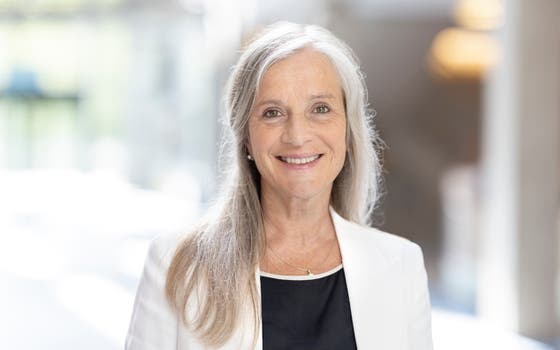'Use real-world data for faster innovation in healthcare'

"We need an agile healthcare system that learns sustainably from real-world data," UMC Utrecht Professor of Real-World Evidence Miriam Sturkenboom argues in her oration on 6 July. "With this, we can better help the transition to the Care of Tomorrow."
The call to create ecosystems in which organisations work together to enable rapid evaluation of healthcare data at different levels came through clearly in Miriam Sturkenboom's oration. Using data generated in healthcare, we can answer many questions: 'Are we delivering the right care? How can we work efficiently? How can we improve healthcare?" Real-world data are data about patients' care that are routinely collected as part of providing care or everyday life," says Miriam Sturkenboom. "This data is now mostly fragmented. In the Netherlands, we are therefore missing many opportunities to learn quickly about care and for the benefit of care."
Vaccines against COVID-19
Distributed analysis of real-world data is certainly possible, especially abroad. During the recent pandemic, vaccines were developed and marketed at a rapid pace to reduce the impact of COVID-19. To be ready for safety monitoring, the European Medicines Agency (EMA) needed data. They inventoried how often disease states, which could potentially be reported as adverse reactions, normally occur when vaccination is not used. This was calculated by doing analyses on anonymous health data from more than 65 million people in six countries. These calculations helped to estimate in advance what the European Medicines Agency and vaccine manufacturers could expect: What cases of illness will occur when you vaccinate a large group of people?
After the vaccines were launched, the European Medicines Agency (EMA) commissioned actual safety monitoring. This was possible by rapid comparison of incidence rates before and after vaccination in the same group of people. This monitoring was based on data from four countries with 25 million people. Determining benefits and identifying risks (such as inflammation of the heart muscle and thrombosis) was done by several existing Real-world Evidence networks, which proved to be of great value. "We were able to monitor the effectiveness and safety of COVID-19 vaccines for EMA and vaccine manufacturers and generate the evidence needed for decision-making."
The development of vaccines to protect people in Europe from COVID-19 is one of the examples in healthcare where applications with real-world data have added value. In her oration, Miriam Sturkenboom also talks about the added value of using real-world data in monitoring the effect of drugs when women use them during pregnancy and when a woman is breastfeeding. Information on the safety and benefits of drugs during pregnancy and breastfeeding is often lacking now, but this may change in the future.
Training researchers
The interdisciplinary way we work today is completely different from what researchers used to do. This requires the ability to communicate effectively. In the communities in which we participate, we help develop guidelines and participate in working groups and task forces for continuous on-the-job training and capacity building. On campus, we teach this in the Applied Data Science course. Internationally, we teach on the use of real-world data as part of the joint EU2P master’s programme, and our department is setting up a new Graduate School of Life Science PhD track in Data Science for Healthcare. Together with other UMCs in Health-RI, we are exploring setting up a joint master's for data stewards, a profession that is in high demand but there is no formal training yet.
Health data based on real-world data are not directly usable. Several stages have to be gone through before the final analysis can take place. Miriam Sturkenboom and her colleagues make this possible by organising themselves cleverly. "We have scientific programmers working in a larger community. Together with epidemiologists, statisticians and data scientists, the programmers have developed a reusable infrastructure of tools for distributed analysis. During our projects, we continuously optimise the data infrastructure, also in collaboration with our community partners."
Future
Miriam Sturkenboom: "To respond to today's healthcare challenges, we need to scale up with real-world evidence and we need to collaborate regionally, nationally and internationally." This is a current development. "As part of the Health-RI infrastructure, we are creating U-Cloud, a Utrecht regional infrastructure that will be connected to the national infrastructure so that we can monitor and evaluate regional healthcare provision," Miriam says. "This is essential to realise ambitions we have as UMC Utrecht: We want to deliver value-based healthcare, in collaboration with our regional partners."
